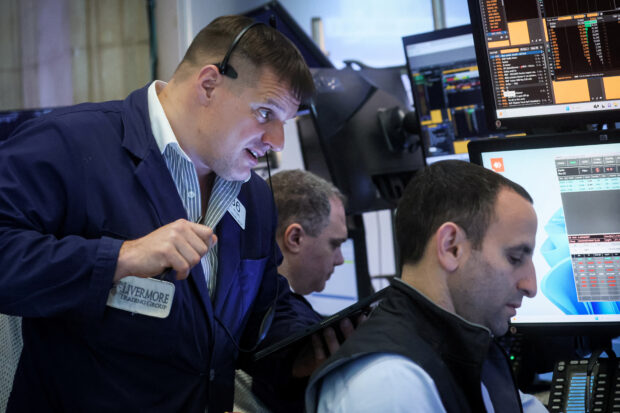The S&P 500 and Nasdaq experienced a significant surge on Thursday, reaching their highest levels in 14 months. This positive movement was driven by optimistic economic data, which suggested that the U.S. Federal Reserve is approaching the end of its aggressive interest-rate hike campaign. As a result, Treasury yields declined, easing concerns about future rate hikes and boosting the stocks of companies like Apple and Microsoft to record highs.
The economic data indicated unexpected growth in U.S. retail sales for May, demonstrating increased consumer spending across various sectors, including vehicle purchases. Additionally, jobless claims remained steady, albeit slightly above economists’ forecasts. Import prices also fell in May, marking the sharpest annual decrease in three years. These reports contributed to the belief that inflation is slowing down.
Following their latest meeting, the Federal Reserve decided to keep interest rates unchanged in the 5-5.25 percent range. However, they hinted at the possibility of future rate hikes this year due to persistent inflation. Nevertheless, investors remain skeptical about the Fed’s hawkishness, attributing the market’s rally and falling yields to softer inflation data earlier in the week along with resilient economic data.
Market traders are currently predicting a 67 percent chance of a 25-basis point rate hike in July, followed by a potential rate cut by December. These expectations influenced the broad gains seen across various sectors of the market, particularly those sensitive to changes in the economy’s health. All 11 S&P 500 sector indexes recorded increases, with the healthcare sector leading the way with a 1.55 percent gain, followed closely by a 1.54 percent increase in communication services.
As a result of falling Treasury yields, stocks of companies that are more dependent on interest rates for growth experienced a boost. Apple’s stock rose 1.1 percent, while Microsoft saw a significant rally of 3.2 percent, surpassing its previous record high close in November 2021. This positive market sentiment can be attributed to the reduction in recession fears, prompting investors to return to equity investments.
In terms of year-to-date performance, the S&P 500 has achieved a 15 percent increase, while the Nasdaq has soared approximately 32 percent. These gains have been driven by several factors, including signs of economic resilience, better-than-expected earnings seasons, and the belief that interest rates are nearing their peak.
At the end of the trading session, the S&P 500 rose 1.22 percent to reach 4,425.84 points. The Nasdaq increased by 1.15 percent, closing at 13,782.82 points, with a total gain of almost 4 percent for the week. The Dow Jones Industrial Average also experienced gains, rising 1.26 percent to 34,408.06 points.
The trading volume on U.S. exchanges was relatively high, with 11.8 billion shares traded, compared to the average of 10.9 billion shares over the previous 20 sessions. However, not all stocks performed well during the trading day. Kroger Co saw a decline of 2.7 percent after missing first-quarter revenue estimates, while Kohl’s Corp rose by 2.7 percent after receiving an upgraded rating by TD Cowen.
U.S.-listed shares of Chinese companies Alibaba Group and JD.com also saw gains of more than 3 percent following the People’s Bank of China’s decision to cut the borrowing cost for its medium-term policy loans, marking the first reduction in 10 months.
Overall, advancing issues outnumbered falling ones within the S&P 500 by a ratio of 7.1-to-one. The S&P 500 recorded 48 new highs and no new lows, while the Nasdaq reached 80 new highs and 72 new lows.
Denial of responsibility! VigourTimes is an automatic aggregator of Global media. In each content, the hyperlink to the primary source is specified. All trademarks belong to their rightful owners, and all materials to their authors. For any complaint, please reach us at – [email protected]. We will take necessary action within 24 hours.


